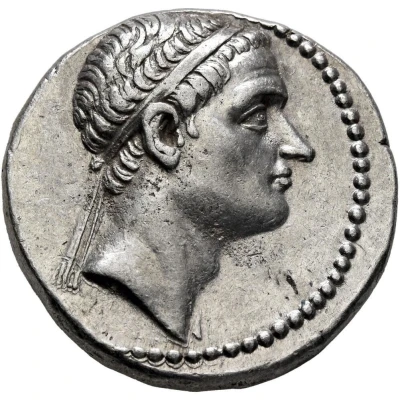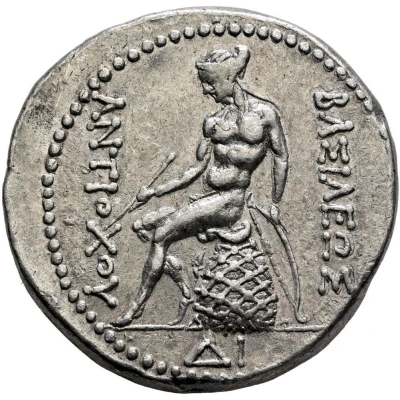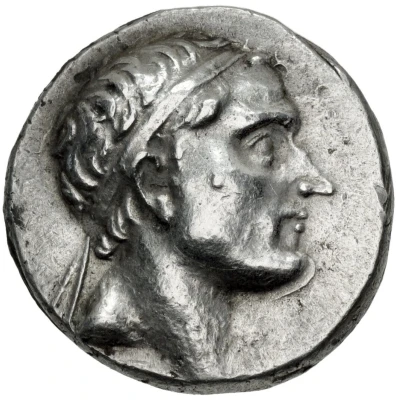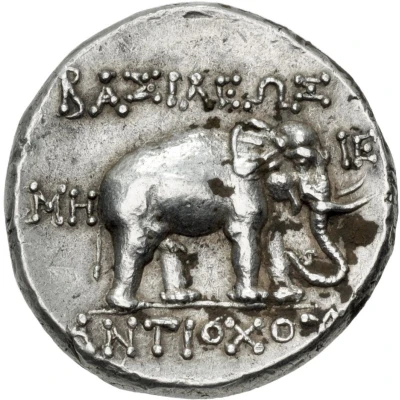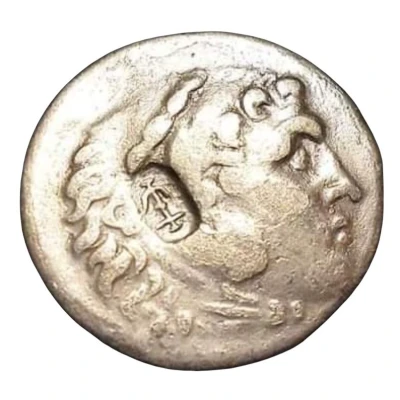
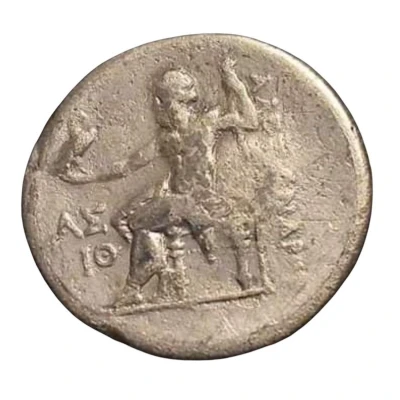

© PA-Engineer (CC0)
Tetradrachm In the name of Alexander III; Aspendos 194 BC - 165 BC
| Silver | 16.2 g | 30 mm |
| Issuer | Seleucid Empire (Seleucid Empire (305 BC - 64 BC)) |
|---|---|
| King | Seleukos IV Philopator (187 BC - 175 BC) |
| Type | Standard circulation coin |
| Years | 194 BC - 165 BC |
| Value | Tetradrachm (4) |
| Currency | Drachm |
| Composition | Silver |
| Weight | 16.2 g |
| Diameter | 30 mm |
| Shape | Round (irregular) |
| Technique | Hammered, Countermarked |
| Orientation | Variable alignment ↺ |
| Demonetized | Yes |
| Updated | 2024-10-10 |
| Numista | N#322255 |
|---|---|
| Rarity index | 94% |
Reverse
Zeus Aëtophoros seated on stool-throne left, eagle on outstretched right hand, sceptre in left hand; inscription in right field; in left field, mintmark above date.
Script: Greek
Lettering:
ΑΛΕΞΑΝΔΡΟΥ
AΣ
ΙΘ
Translation:
Alexander (III, the Great)
Aspendos
Comment
Countermarked coinage on a tetradrachm from the Kingdom of Macedonia in the name of Alexander III.A coin originally struck at Aspendos and dated BC 194-193 (ΙΘ), the anchor counterstamp on obverse is a common indication of circulation within the Seleucid Empire.
The counterstamp position seems to have followed a standard for the Seleucid Empire coinage, being placed aither on the ear on the obverse or below the throne on the reverse (mostly for later counterstamping).
These counterstamped coins are somewhat hard to precisely date and mostly range from BC 200 to BC 165.
Interesting fact
One interesting fact about this coin is that it features the image of Alexander the Great's successor, Alexander III, also known as Alexander the Great's son, who was only a child when his father passed away. Despite his young age, Alexander III was able to maintain his father's vast empire and even expanded it further. This coin is a testament to his reign and the enduring legacy of Alexander the Great.
